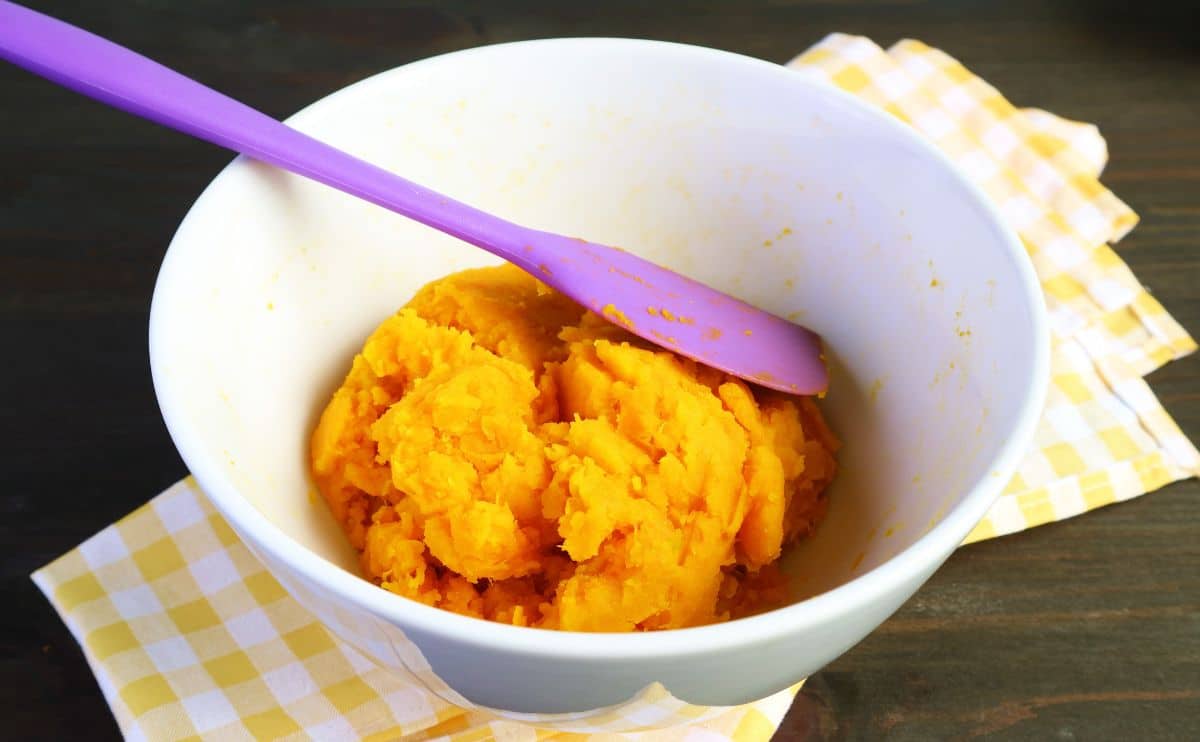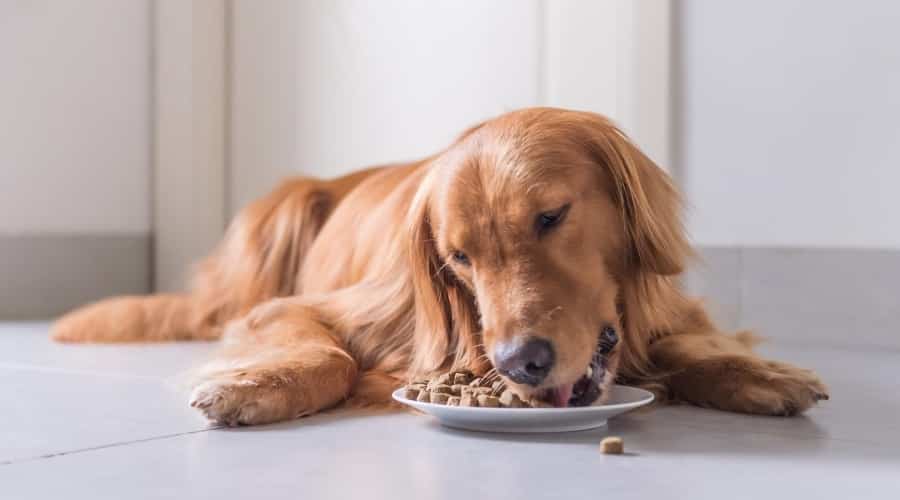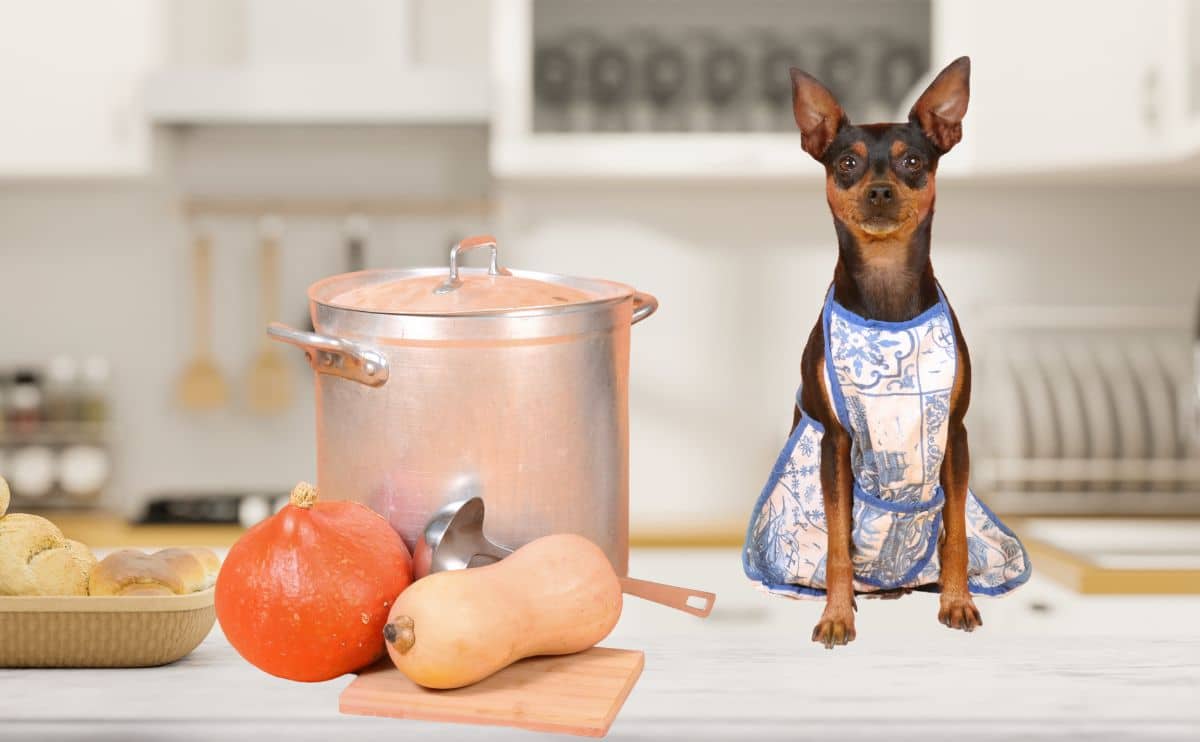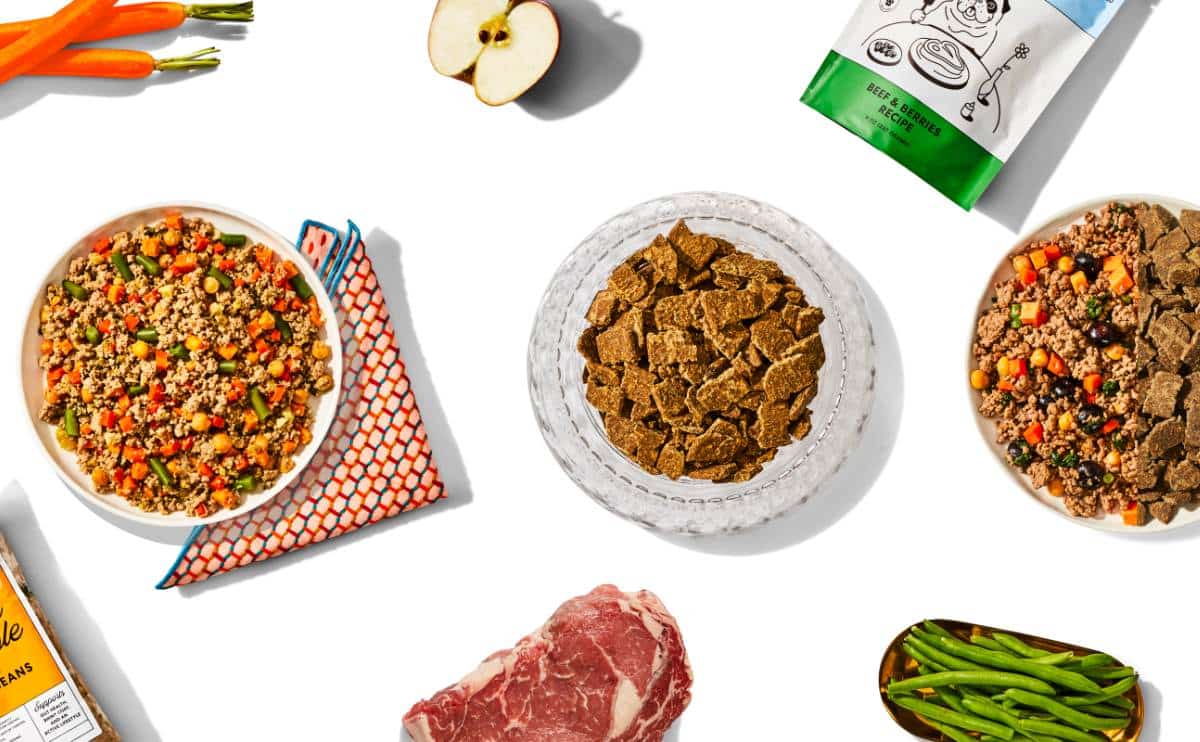Can Dogs Eat Pizza? Is it Safe? The Answer Might Surprise You!
When you purchase through links on our site, we may earn a commission. Here’s how it works.

Pizza is one of the world’s favorite convenience foods. Three billion pizzas are eaten across the United States every year, and even more across the globe. It’s the ultimate comfort food for us humans, but how about our canine companions? Can dogs eat pizza? And is it safe?
Table of Contents
We all like to show our dogs that we love them, and we are all guilty of using food to try and demonstrate our love sometimes. Undoubtedly, the best way to show our dogs love is with attention—a game, a walk, a cuddle on the sofa, or sharing our favorite food with them. That said, is it also OK to give our dogs this yummy food as a treat?
As you tuck into your Friday night delivery or pizza night, you may be wondering, “Can I share my pizza with my dog?” or “Is pizza bad for my dog?” Pizzas vary hugely in terms of their toppings and ingredients, so you may ask, “Is there a type of pizza that my dog can eat?” or “Is all pizza bad for dogs?” There’s a lot to explore, and much depends on the situation. We examine the facts and see what the truth is.
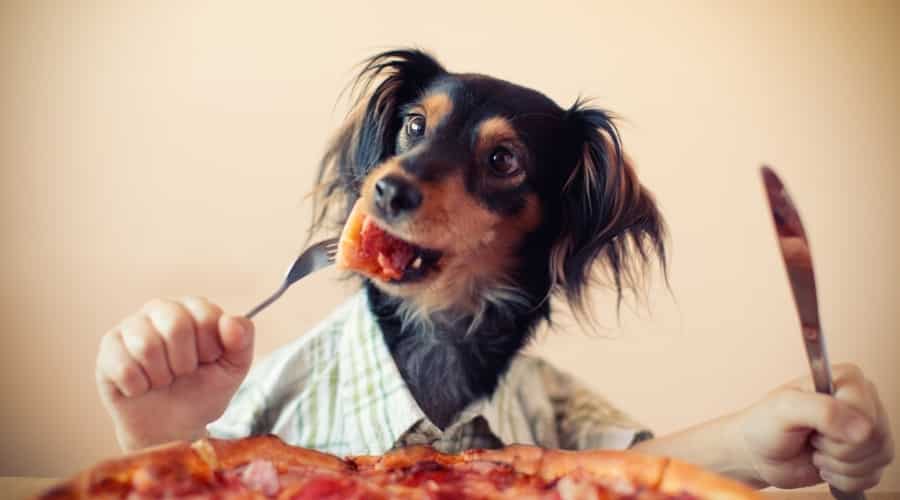
While flatbreads with various toppings existed long before, modern pizza took shape in Naples, Italy, where bakers crafted the perfect combination of dough, tomato sauce, and cheese. As pizza spread worldwide, it became a staple for movie nights, celebrations, and late-night cravings. And of course, where there’s pizza, there’s a dog nearby, eagerly waiting for a dropped crust or an unguarded slice.
It begs the question when our pups are begging for a piece: can dogs eat pizza? Before you slide a slice to your pup, let’s take a closer look.
Pizza is a deceptively complex food when it comes to dogs. At first glance, it might seem harmless—after all, it’s just bread, sauce, and toppings. But each of these components can pose potential risks to your pup’s health, making pizza a questionable treat for dogs. While some plain ingredients might be safe in small amounts, others can be downright dangerous, turning what seems like a harmless snack into a trip to the vet.
Is Pizza Bad For Dogs? The Truth Unveiled…
It’s important to understand what your pizza is made with and ensure it doesn’t have any toxic ingredients that might cause your pup to end up at the vet. Time to break it down to talk about each part that goes into making a pizza.
Is Pizza Crust Bad For Dogs?

A traditional pizza crust is made from a simple combination of wheat flour, yeast, sugar, salt, oil, and water. While none of these ingredients are immediately toxic to dogs, some of them can pose health risks when consumed in large amounts. The biggest concerns for canine consumption are sugar and salt, which can be harmful when included in excessive quantities. Even though a small bite of plain, unseasoned crust may not seem dangerous, regular or large amounts of these ingredients can lead to long-term health problems for your furry friend.
Salt, for example, is an essential mineral for both humans and dogs, but in high amounts, it can lead to dehydration, high blood pressure, and even sodium ion poisoning in dogs. Most processed and store-bought pizza crusts contain significantly more salt than what a dog should consume in one sitting. Symptoms of excessive salt intake in dogs include excessive thirst, lethargy, vomiting, diarrhea, and, in severe cases, tremors or seizures. While a tiny nibble of plain crust isn’t likely to cause serious harm, allowing your dog to eat pizza regularly or in large portions could contribute to long-term health complications.
Additionally, store-bought and frozen pizza crusts often contain preservatives, artificial flavors, and unhealthy oils that add unnecessary fats and chemicals to a dog’s diet. Even homemade dough can pose risks if it contains garlic or onion powder, which are toxic to dogs. Given these concerns, it’s best to avoid feeding pizza crust to your dog, especially if it comes from a processed or restaurant-made pizza. While a tiny, plain piece may not cause immediate harm, it’s not a healthy or beneficial snack for your pup in the long run.
Is Pizza Sauce Bad For Dogs?

A traditional pizza sauce is typically made from tomatoes, blended with various seasonings and spices to enhance flavor. While plain, ripe tomatoes in small amounts are generally safe for dogs, the problem lies in the added ingredients. Most pizza sauces contain a mix of garlic, onions, and spices—many of which can be harmful or even toxic to dogs. These seasonings, while delicious for humans, can wreak havoc on a dog’s digestive and overall health.
The most dangerous ingredients in pizza sauce are garlic and onions, both of which are toxic to dogs, whether raw, cooked, powdered, or dried. These ingredients contain compounds that damage a dog’s red blood cells, leading to hemolytic anemia—a condition where red blood cells are destroyed faster than they can be replaced. Dogs suffering from anemia may become weak, lethargic, uninterested in food, and may experience pale gums, rapid breathing, or an increased heart rate. In severe cases, this condition can be life-threatening and require veterinary intervention.
“In my experience, many pet owners don’t realize that garlic and onions are toxic for dogs. They are a real hidden problem, and I’ve seen accidental ingestion make dogs very poorly indeed. Many human foods contain these popular ingredients, so dog treats or kibble are always a safer option if you want to give your pup a reward.”
Veterinarian Lizzie Youens
Even if the amount of garlic or onion in a small bite of pizza seems minimal, the cumulative effect over time can be dangerous. Since pizza sauce often contains garlic and onion powder in concentrated forms, even small doses can be harmful. Unlike humans, who can metabolize these ingredients more efficiently, dogs have a much lower tolerance and can suffer serious health consequences from repeated exposure.
Beyond garlic and onions, spicy seasonings like chili flakes, red pepper, or black pepper are sometimes added to pizza sauce for an extra kick. While humans may enjoy these flavors, dogs have much more sensitive digestive systems, and spicy foods can cause significant discomfort. Capsaicin, the compound responsible for the heat in chili peppers, can lead to stomach pain, vomiting, diarrhea, and excessive drooling in dogs. Some dogs may also experience discomfort in their throat and mouth, making them restless and agitated.
Considering all these risks, pizza sauce is best avoided for dogs. Even if the sauce seems mild, it’s difficult to determine its exact ingredients, especially when it comes from store-bought or restaurant-made pizzas. Instead of taking the risk, it’s safer to keep pizza sauce away from your pup and stick to dog-friendly treats that won’t compromise their health.
What Pizza Cheeses Can Dogs Eat?

Cheese is a staple ingredient in pizza, adding rich flavor and a gooey texture that many people (and their dogs) find irresistible. While some cheese can be safe for dogs for dogs in small amounts, others pose serious health risks due to their fat content, lactose levels, or toxic mold cultures.
Mozzarella
Mozzarella, the most common pizza cheese, is relatively low in lactose compared to other cheeses, making it one of the safer options for dogs. In small amounts, plain mozzarella is generally safe, but problems arise with excessive consumption. The high fat content in full-fat mozzarella can contribute to weight gain and pancreatitis if eaten regularly. Low-fat mozzarella is a better option if you want to share a tiny bite with your pup.
Cheddar
Cheddar cheese is lower in lactose than some other cheeses, meaning it’s less likely to cause digestive upset in dogs that are mildly lactose intolerant. However, many commercial cheddar cheeses contain high amounts of salt, which can lead to dehydration and sodium-related health issues. A small nibble on occasion may not be harmful, but cheddar should not be a regular part of your dog’s diet.
Parmesan (In Tiny Amounts)
Parmesan cheese is aged and has lower lactose content, but it is extremely high in sodium. A tiny sprinkle on a homemade dog treat might not be dangerous, but feeding your dog pizza with parmesan (or allowing them to lick up excess cheese) can lead to salt toxicity, dehydration, and digestive upset. Given the high salt levels, it’s best to avoid parmesan for dogs altogether.
Blue Cheese & Gorgonzola (Highly Toxic)
Blue cheese, gorgonzola, and other mold-ripened cheeses are dangerous for dogs. These cheeses contain Roquefortine C, a toxin produced by the mold, which can cause tremors, seizures, and neurological problems in dogs. Even small amounts of blue cheese can be harmful, so it’s best to keep it completely out of reach.
Feta & Goat Cheese (Too Salty & Fatty)
Feta and goat cheese are often used in gourmet or Mediterranean-style pizzas, but they are high in fat and sodium, making them unhealthy for dogs. Consuming these cheeses can lead to dehydration, digestive issues, and pancreatitis in dogs prone to dietary sensitivities. Because of their strong flavors and high salt content, these cheeses should be avoided.
Ricotta (Hard To Digest)
While not outright toxic, ricotta cheese is high in lactose, which can cause stomach upset, bloating, and diarrhea in dogs. Dogs with lactose intolerance will have a hard time digesting ricotta, leading to gastrointestinal discomfort. It’s best to skip this cheese when considering sharing pizza with your pup.
Processed Cheese & Cheese Blends (Artificial Additives & High Fat)
Processed cheeses, including American cheese, cheese blends, and imitation cheeses, often contain artificial additives, excessive sodium, and unhealthy fats. These ingredients can contribute to obesity, digestive issues, and heart problems in dogs. Since processed cheeses don’t provide any nutritional benefits and can be difficult for dogs to digest, they should be completely avoided.
Understanding the different types of cheese used in pizza can help you determine whether sharing a bite with your pup is a good idea—or a dangerous one.
Exceptions to this would be dogs that are lactose intolerant or dogs with sensitive stomachs. If you’re not sure if cheese is safe for your pup, it’s best to check with your veterinarian.
Dog-Safe (& Unsafe) Pizza Toppings: What Pizza Toppings Can Or Can’t Dogs Eat?
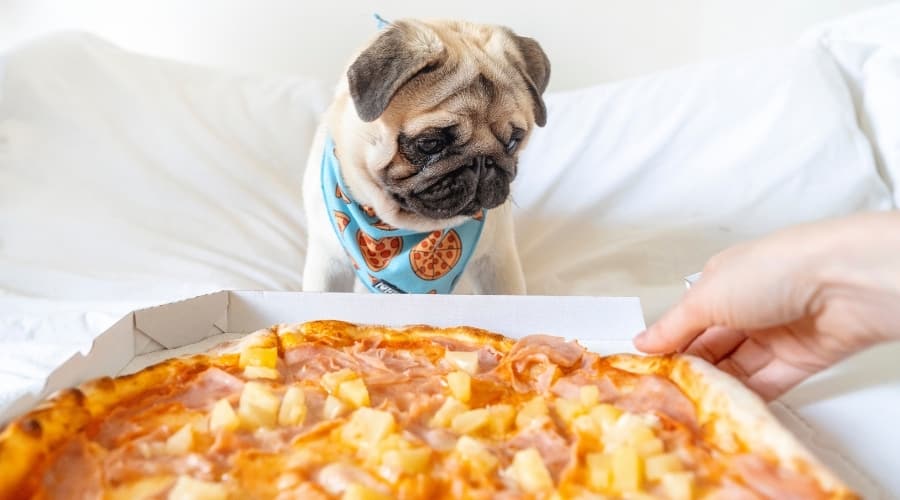
Pizza toppings vary, and most are rich, fatty, and overly processed. Fresh vegetables may sound okay, but often, when prepared for pizza, they are cooked in rich oils or spices that can irritate a dog’s stomach.
Some of these toppings are generally safe as long as they are unseasoned, cooked, and given in small amounts. We’ll start with the safest options and work up to the most dangerous.
Bell Peppers (Red, Green, Yellow)
Bell peppers are a great low-calorie snack for dogs because they are packed with vitamins A, C, and antioxidants. They can be safely fed raw or cooked, but they should be served plain without oils, butter, or seasoning. Avoid spicy peppers, as they can irritate a dog’s stomach.
Spicy peppers like jalapeños, chili flakes, and hot sauces contain capsaicin, which can cause stomach pain, vomiting, and diarrhea in dogs. Even a small amount can lead to discomfort, excessive drooling, and digestive upset.
White Or Cremini Mushrooms (Store-Bought Unseasoned)
Are mushrooms on pizza bad? Plain, store-bought mushrooms (such as white button or cremini) are safe for dogs. However, wild mushrooms can be highly toxic and may cause severe poisoning. Since most people can’t distinguish between safe and toxic wild mushrooms, it’s best to avoid feeding mushrooms altogether unless you’re absolutely sure they are safe.
Unsalted & Pitted Olives
Olives are not toxic to dogs, but they should be unsalted and pitted to prevent choking hazards and excessive sodium intake. Many canned or jarred olives are soaked in brine, which contains high amounts of salt, making them a poor choice for dogs. Black olives are preferable over green olives, as they contain less sodium.
Fresh Pineapple (In Small Amounts)
Pineapple contains natural sugars and digestive enzymes, which can be beneficial in small doses. However, the high sugar content can upset a dog’s stomach if eaten in large amounts. If feeding pineapple, make sure it’s fresh and not canned, as canned pineapple contains added sugars and syrups that can be harmful.
Spinach
Spinach is rich in iron, fiber, and antioxidants, making it a healthy snack in tiny portions. However, it also contains oxalates, which can block calcium absorption and lead to kidney problems if fed in large amounts over time. Occasional spinach is fine, but it shouldn’t be a regular part of a dog’s diet.
Plain Chicken (Unseasoned & Cooked)
Chicken is one of the best protein sources for dogs, as it is lean and easy to digest. However, it must be completely plain—no garlic, onions, marinades, or spicy seasonings. Many pizza toppings include spiced or processed chicken, which is unsafe for dogs.
Plain Beef (Lean & Cooked)
Lean beef is a great protein source for dogs, as long as it is not heavily seasoned or cooked in oils and fats. Ground beef or steak can be safe in small amounts, but avoid fatty cuts or beef with added sauces, which may contain toxic ingredients.
Turkey Bacon & Sausage (Unseasoned & Cooked)
Plain turkey is safe for dogs, just like chicken, but processed turkey, such as turkey bacon or turkey sausage, is often loaded with sodium and preservatives, making it unhealthy. Dogs can eat small amounts of plain, roasted turkey without skin, seasoning, or added fats.
Anchovies (Unsalted & Cooked)
Anchovies are packed with omega-3 fatty acids, which can support a dog’s skin and coat health. However, they should be unsalted and given in very small portions, as too much fish can lead to high mercury intake. Avoid anchovies that have been canned in oil or flavored with spices.
Pepperoni (Too Fatty & Salty)
Can dogs eat pepperoni from pizza? Pepperoni is one of the worst meats for dogs, as it is high in fat, sodium, and preservatives. Too much pepperoni can lead to pancreatitis, obesity, and digestive issues. Even a single slice contains too much salt for a dog.
Sausage (High in Fat & Additives)
Sausage is packed with garlic, onion powder, salt, and unhealthy fats, making it unsafe for dogs. Processed sausages, like Italian or spicy sausage, are especially bad because they contain toxic seasonings and preservatives.
Garlic & Onions (Toxic in Any Form)
As already mentioned, garlic is one of the most toxic pizza ingredients for dogs. Even in small amounts, garlic can destroy red blood cells, leading to hemolytic anemia, which causes weakness, lethargy, pale gums, and even organ failure. Garlic powder and garlic-flavored meats are just as dangerous as raw or cooked garlic.
Like garlic, onions contain compounds that destroy red blood cells, leading to anemia and weakness. Even small amounts of onion—whether raw, cooked, powdered, or fried—can be toxic. Onion powder is often hidden in pizza sauce, sausage, or meatballs, making pizza risky for dogs.
What About Pizza Dough For Dogs?

Raw pizza dough contains yeast, which ferments and causes the dough to rise. If eaten raw, the dough will continue to rise in a dog’s stomach and can cause the stomach to inflate, potentially cutting off blood supply to important organs. It can take up so much space inside a dog that it stops the chest from properly inflating and makes it difficult for the dog to breathe.
Similar to bread dough, fermenting yeast in the raw dough gives off alcohol. Dogs are more sensitive to the effects of alcohol than humans and, if they eat raw dough, can suffer serious alcohol poisoning.
Can Dogs Eat Raw Pizza Dough?
No, raw dough is unsafe for dogs. The fermenting yeast can inflate the dough inside your dog’s stomach, causing serious side effects, and the alcohol it releases can cause toxic side effects. Both these effects can be life-threatening.
Stay Alert When Using Pizza Dough
If you’re making homemade pizza, be sure to keep your pup away from dough while it’s rising. It has to be left in a warm place, so people often use the airing cupboard or a drawer low-down in their oven. Be sure they cannot access your chosen place!
If you are concerned your pup may have eaten raw dough, you must urgently call your veterinarian.
Can Dogs Eat Pizza Crusts?
It’s tempting to think our scraps are OK for our dogs, and pizza crust is sometimes leftover, but crusts should not be given to dogs. Crusts can be stuffed with sauces or artificial cheese, which could be bad for dogs. Even plain crust is likely to be fatty and salty.
Can I Make A Homemade Pizza For My Dog?
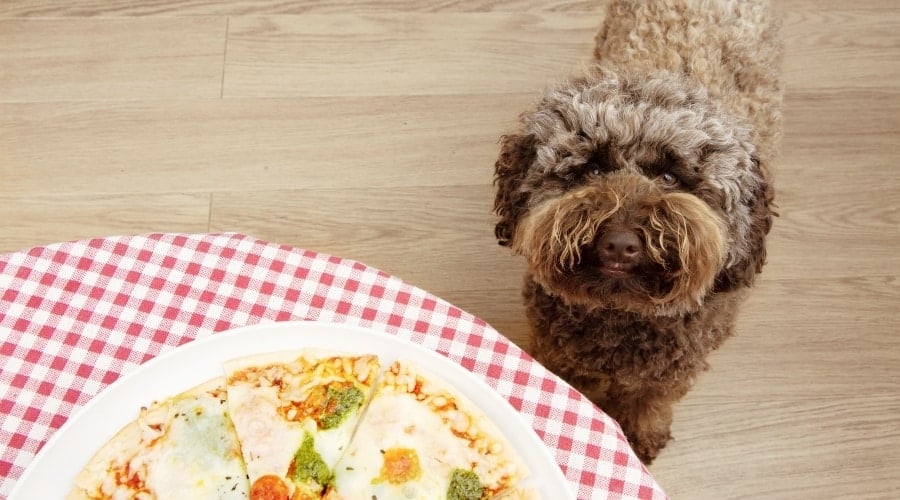
The ingredients in pizza vary. So, can dogs consume some pizzas but not others? In theory, yes, you could make a dog-friendly pizza, but in practice, this is not very realistic.
You could home-cook a pizza with only dog-friendly ingredients, a sugar-free, salt-free crust, no sauce, with plainly cooked meat and veggies on top, but is it worth it? Dogs don’t analyze food as we do and would not be more excited by food because it is shaped like a pizza.
A whole pizza would be far too much for a dog, so you would likely create waste. Your dog would be just as grateful for the plainly cooked veg or meat with no crust, which can be prepped and fed in suitable portion sizes. So, it may be possible to make a dog-friendly pizza, but it is unnecessary, and your dog won’t really appreciate it.
So, What Do I Do If My Dog Eats Pizza?
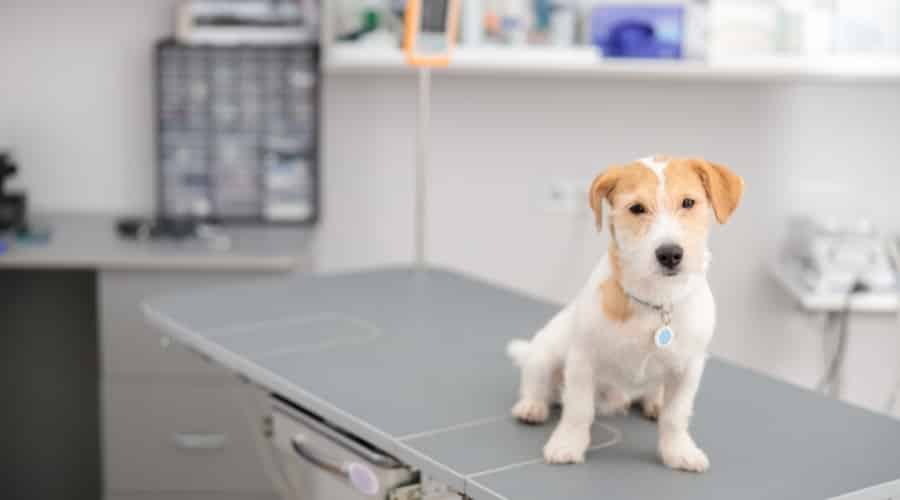
Raw pizza dough is dangerous and can cause severe illness very quickly. Call your veterinarian immediately if you think your dog may have eaten raw dough.
If your dog eats cooked pizza, it could cause vomiting, stomach pain, and diarrhea. If a lot of pizza has been consumed, it’s sensible to call your veterinarian. Your pup might need treatment to induce vomiting so they don’t suffer any more ill effects or to help control symptoms such as stomach pain or diarrhea.
Rich foods, like pizza, can trigger a condition called pancreatitis, which can be serious. If your dog seems unwell after eating food they’re not used to or food not designed for canines, then please call your veterinarian.
A little nibble of pizza is very unlikely to cause your pup any immediate harm, so it’s tempting to think, “Oh, just this once.” Well, please think twice! The more times you give your pup an unhealthy treat, the more likely you are to cause harm.
Feeding unsuitable foods can lead to various diseases and may be shortening your dog’s life. All pet parents want their dogs to live forever, right? So don’t feed pizza to your pup. There are plenty of alternative foods that are safer and just as delicious.
Final Thoughts
In most circumstances, pizza is not an appropriate choice of food for dogs. It’s unsafe because some of the main ingredients are not good for dogs, and neither are many popular toppings. Most pizzas contain multiple ingredients that are bad for dogs. Almost all pizzas, from the crust to the toppings, typically contain ingredients that are unsuitable for canine consumption. Some which are actually toxic and can cause severe illness.
In summary, Pizza is not a wise choice of food to share with your dog. So, as a rule, it’s best to stick to healthier options like rice when it comes to feeding your pup a snack.
